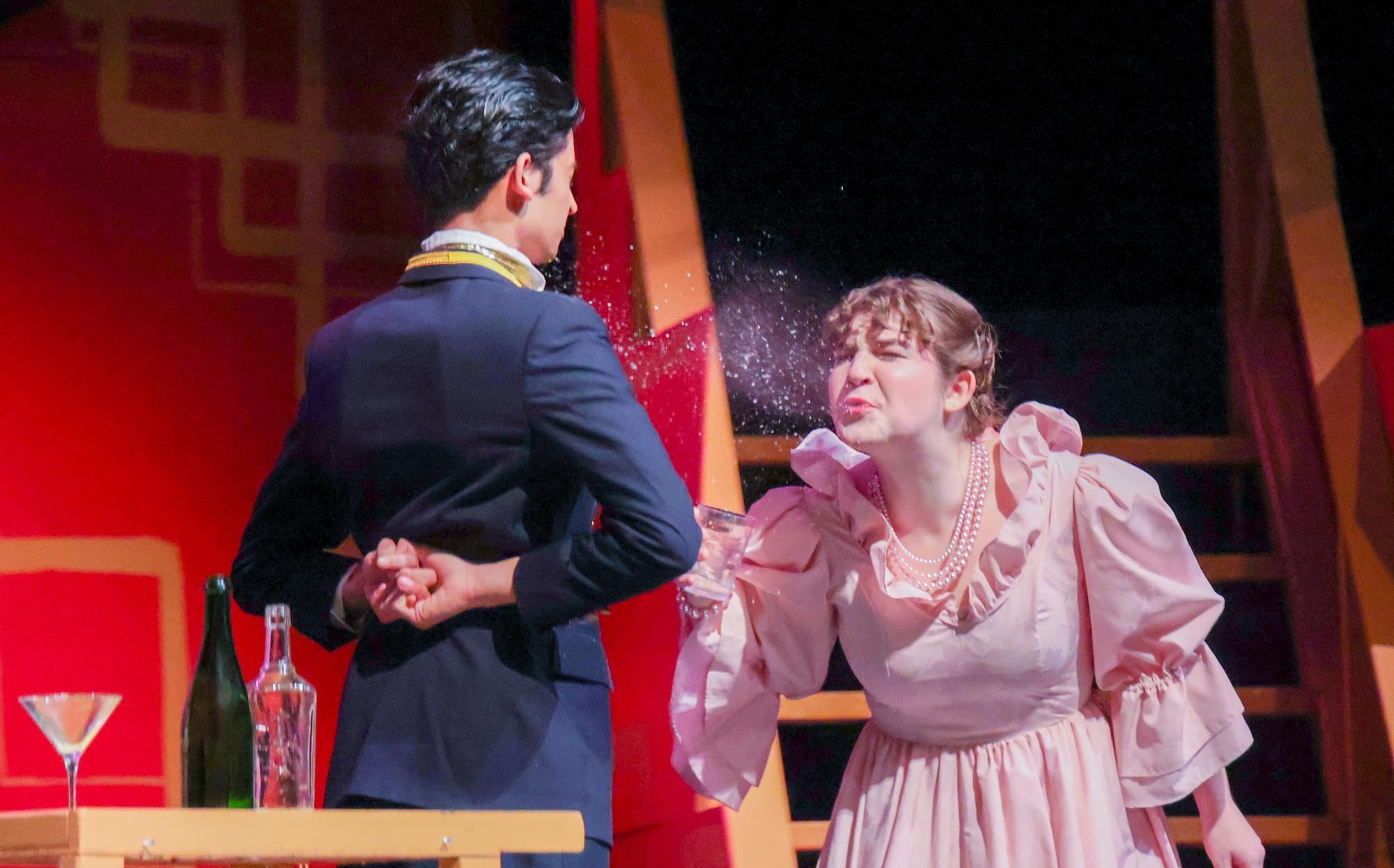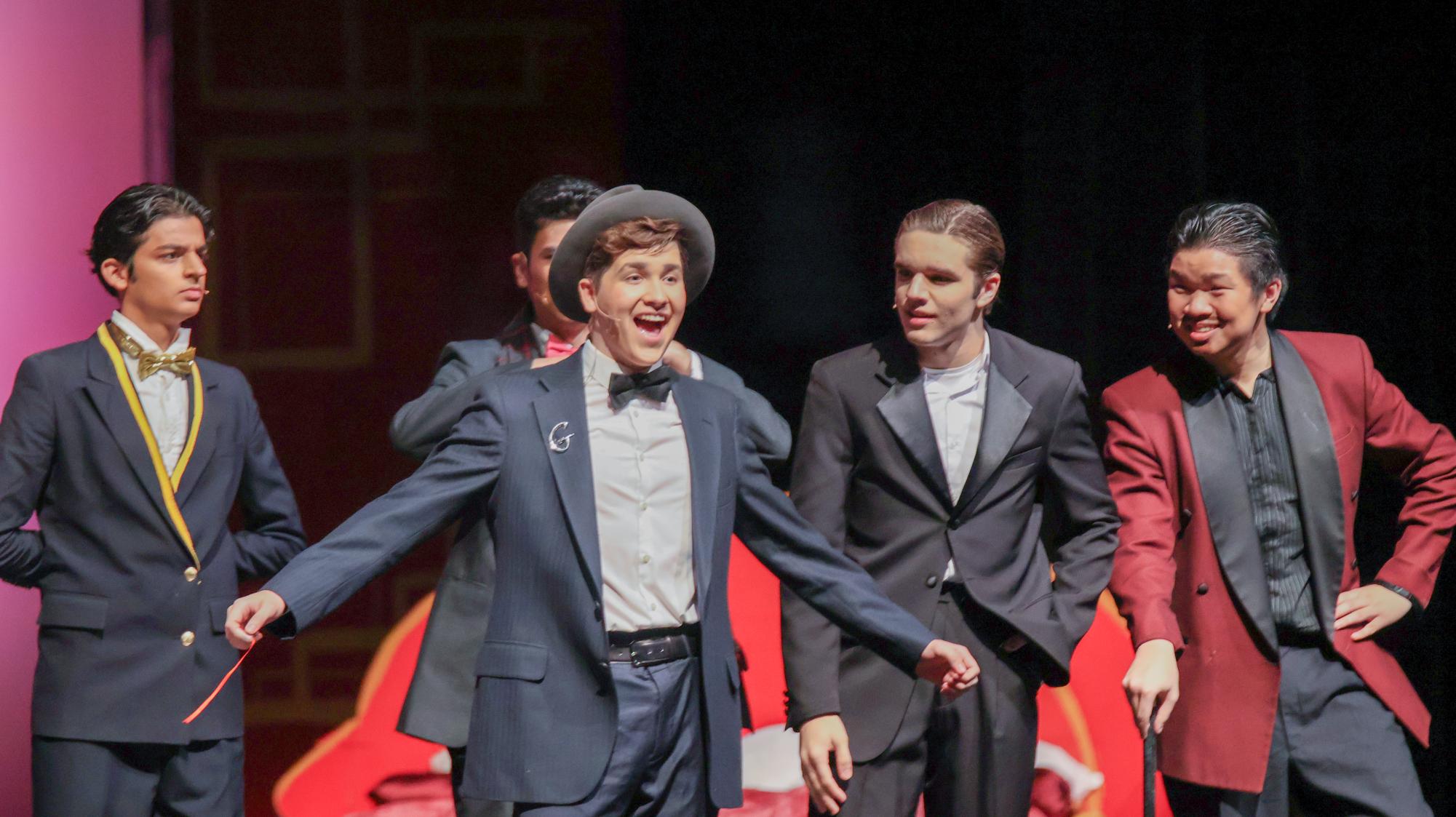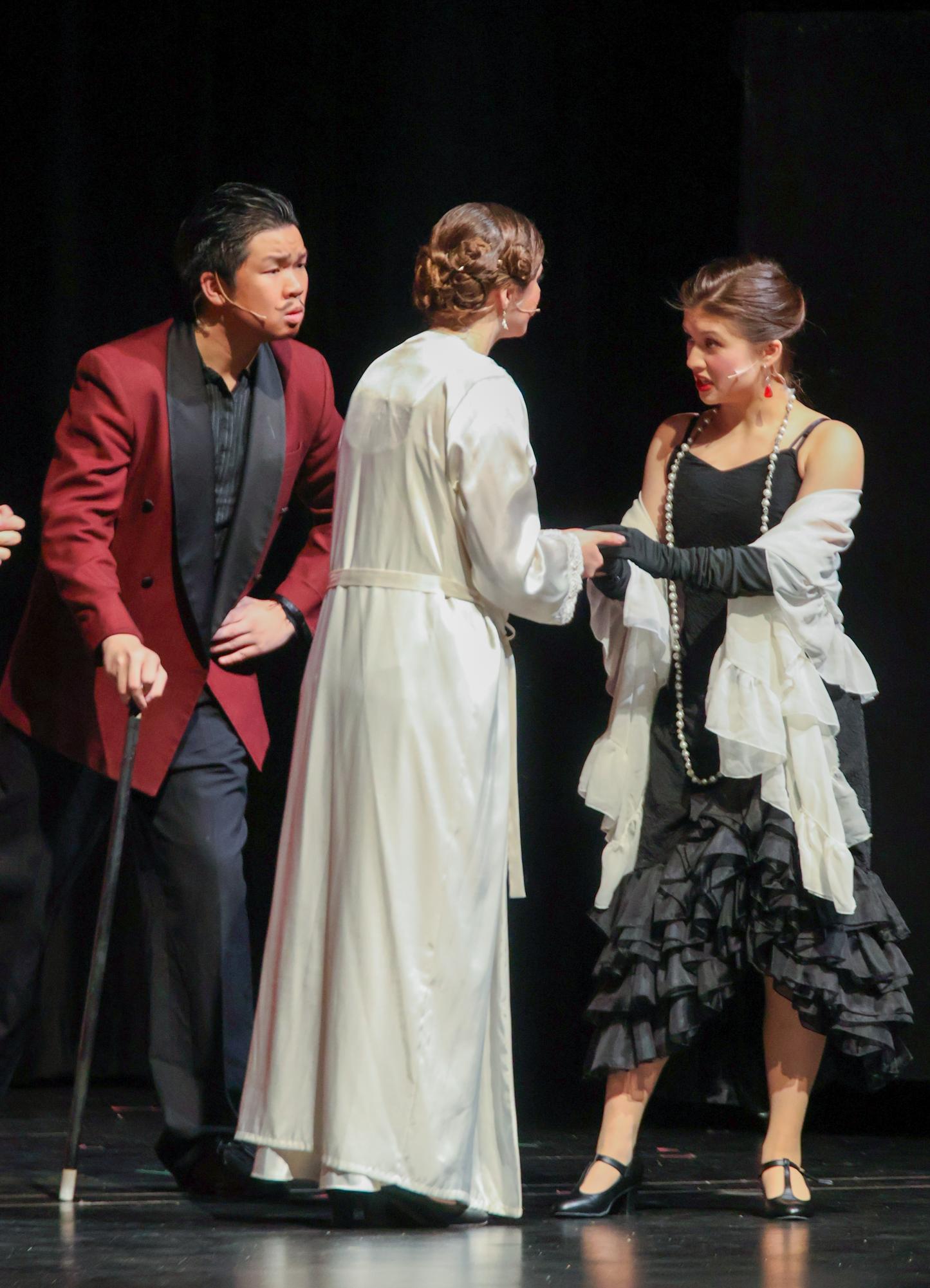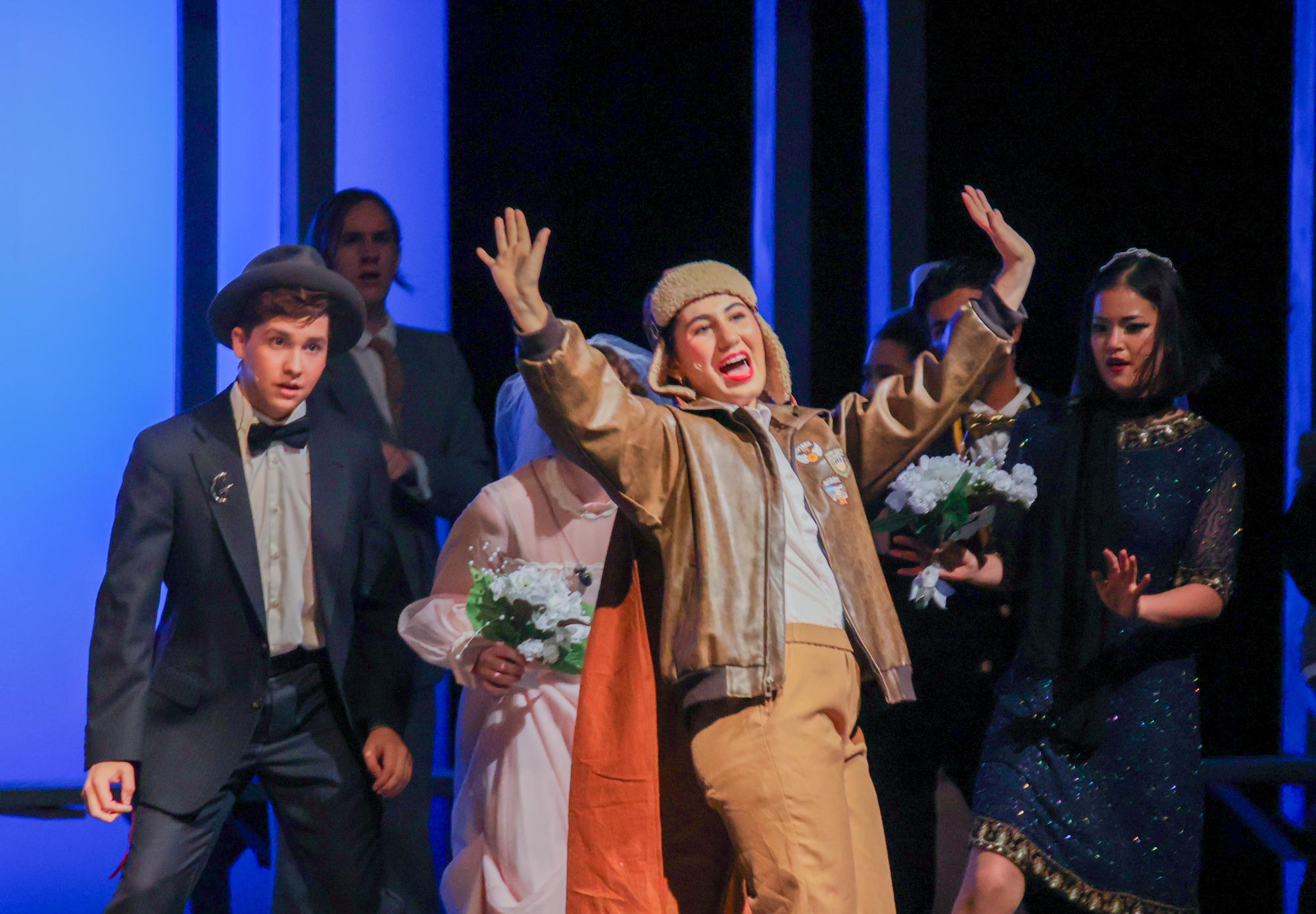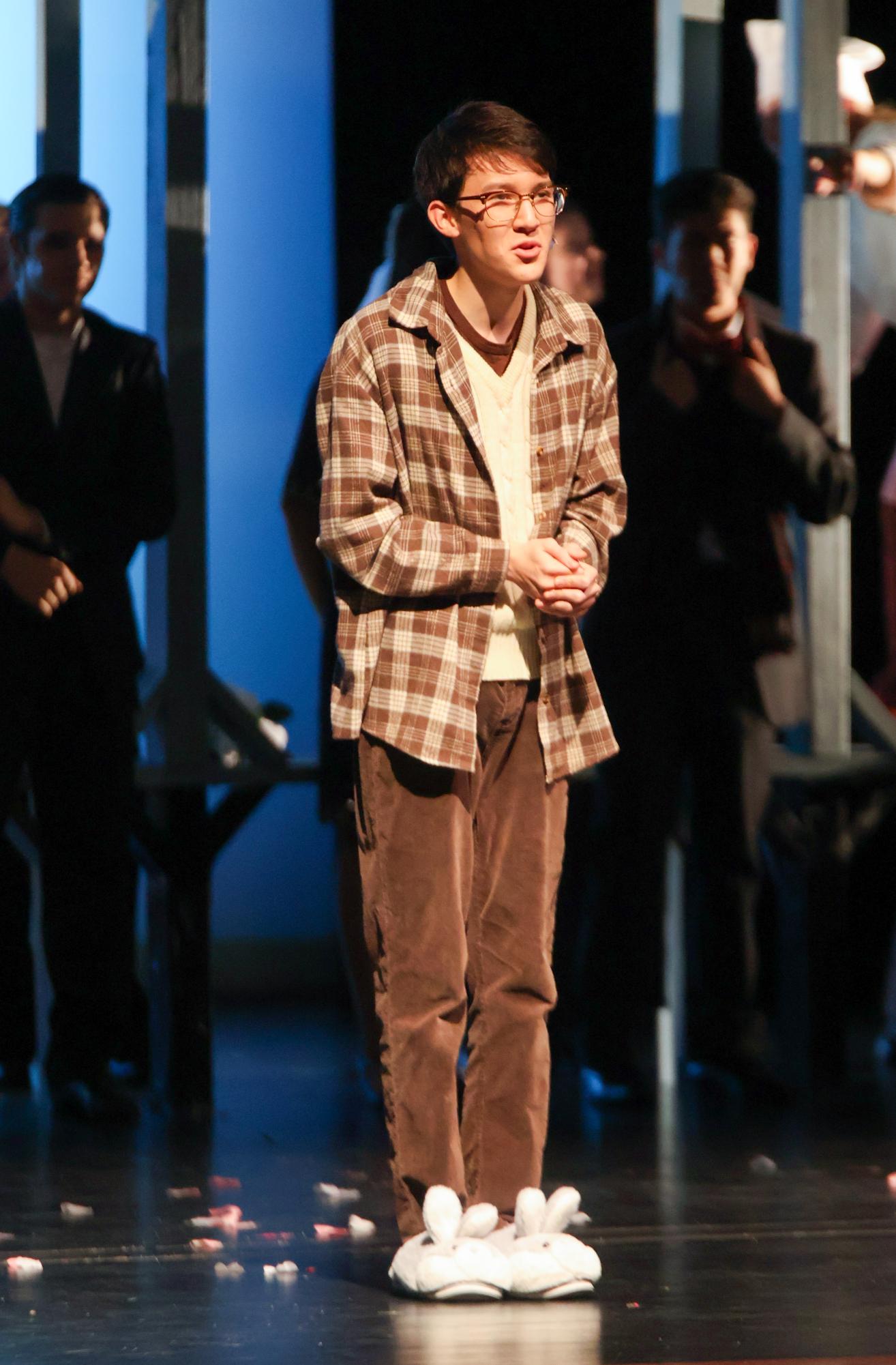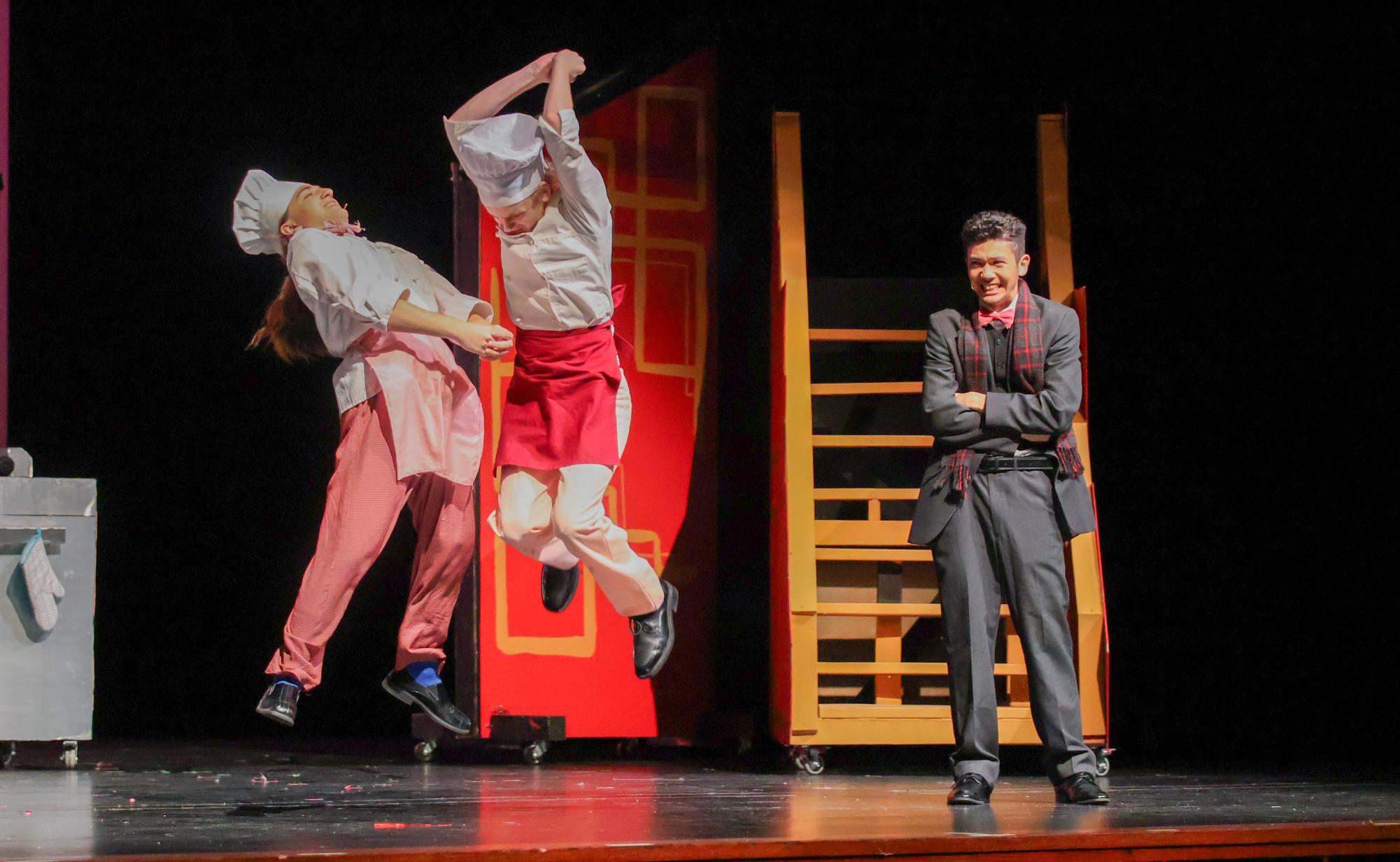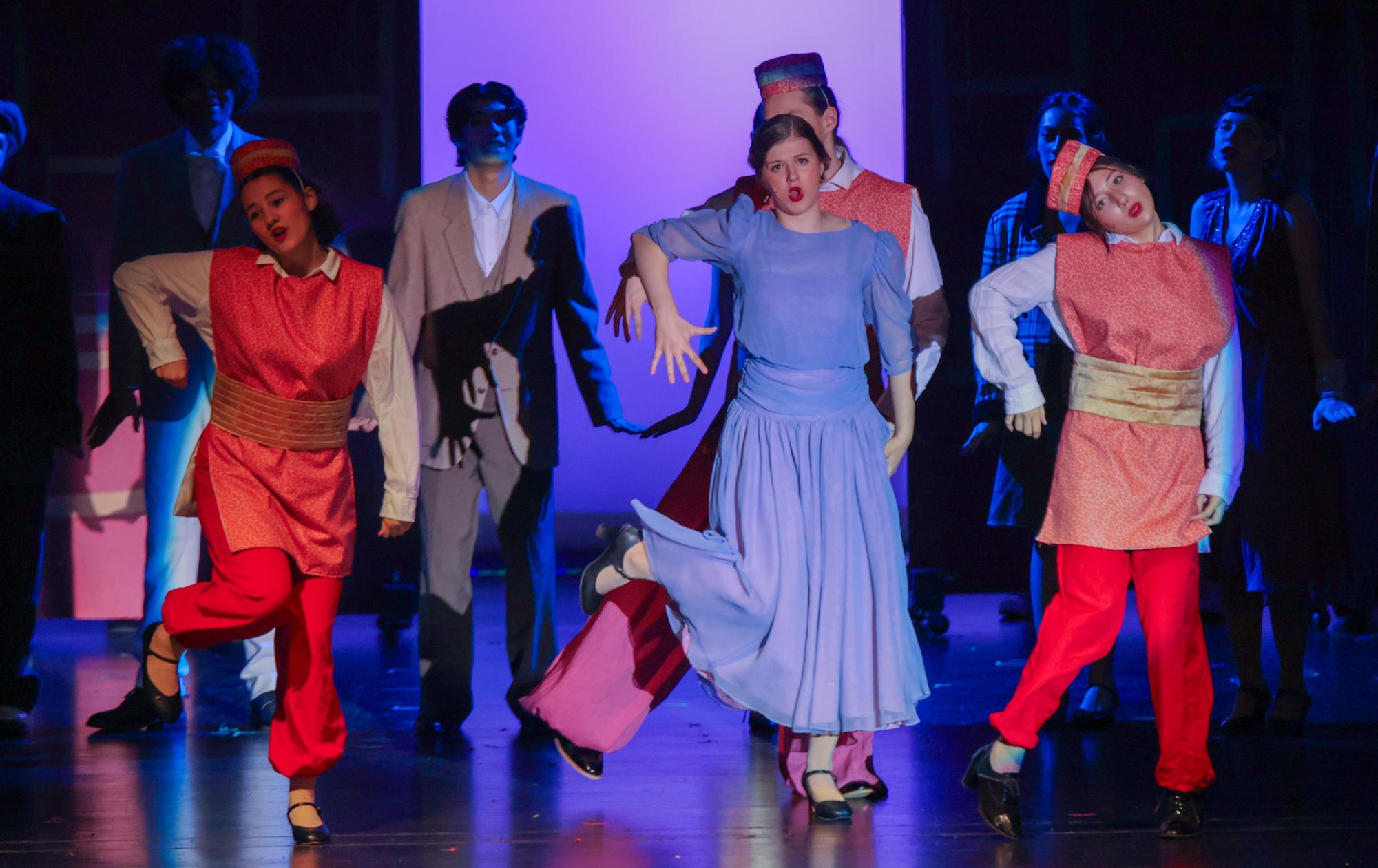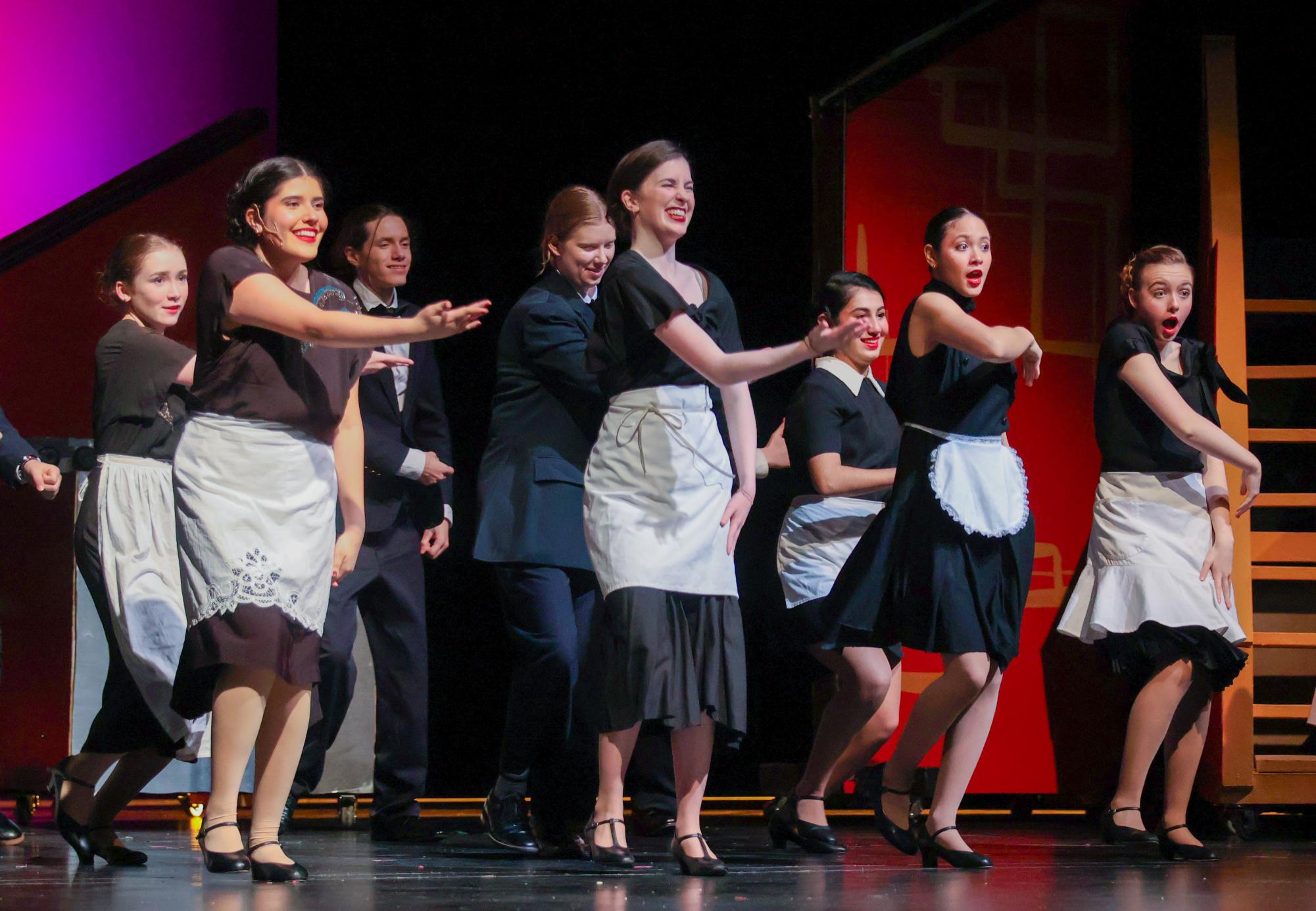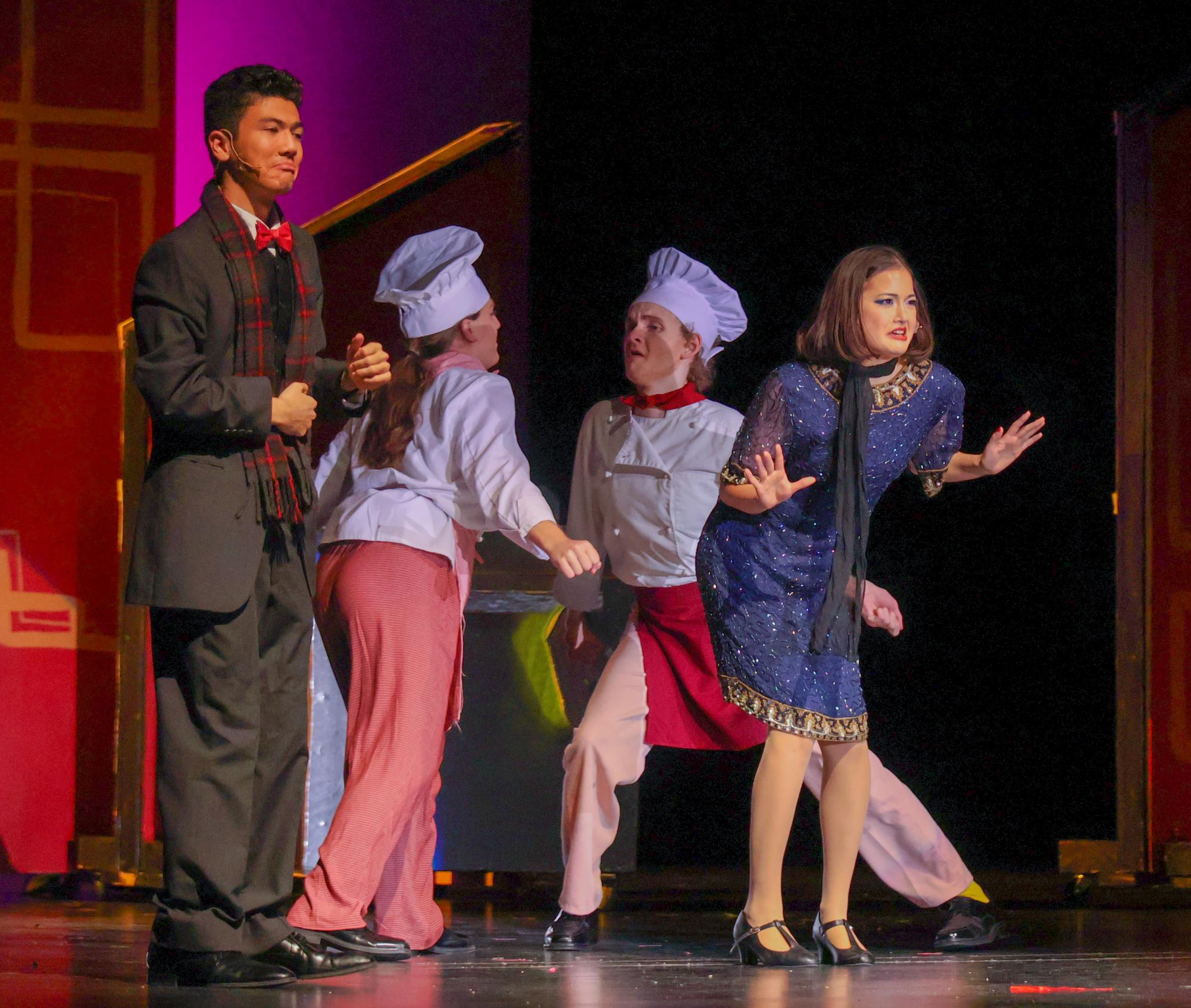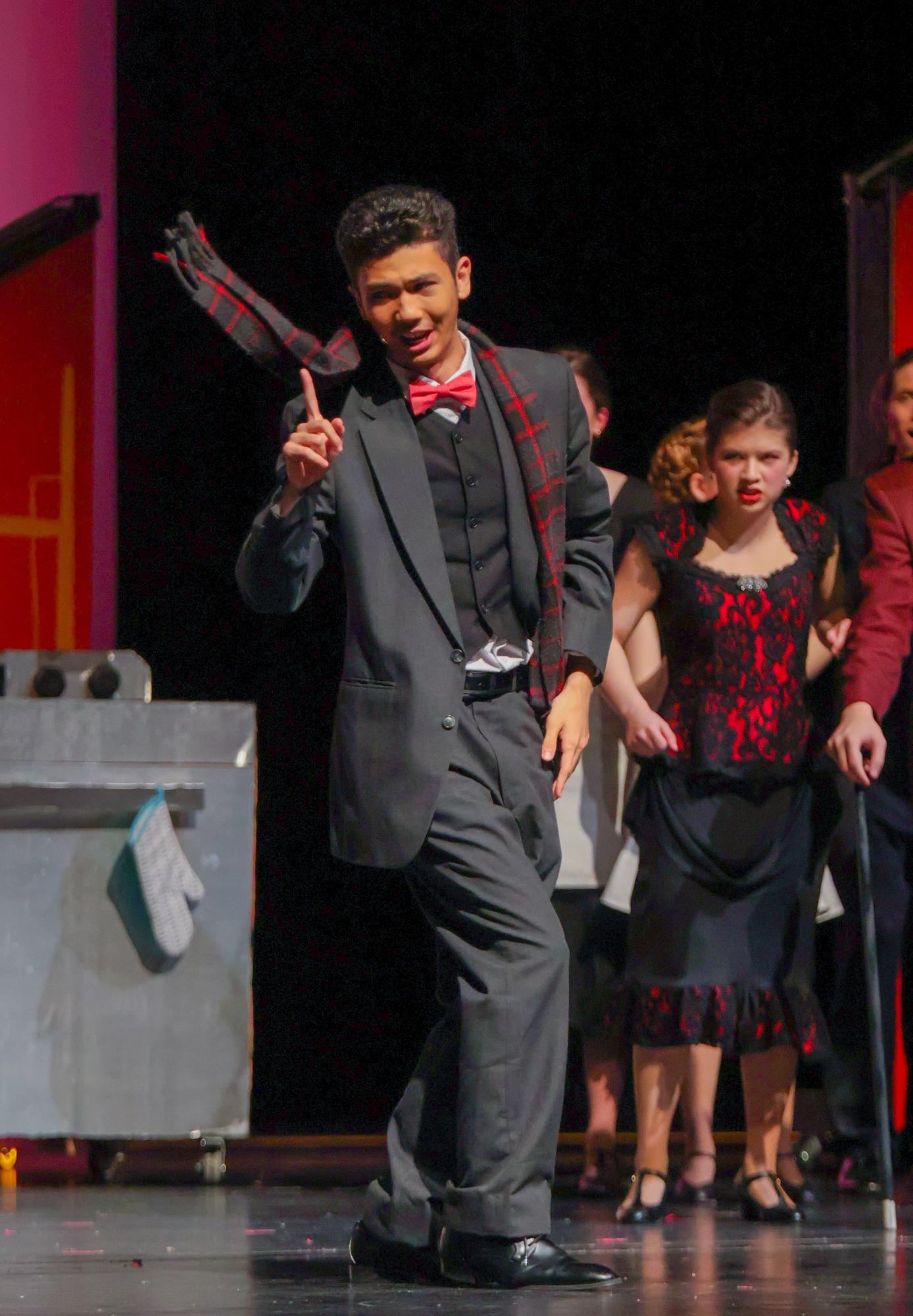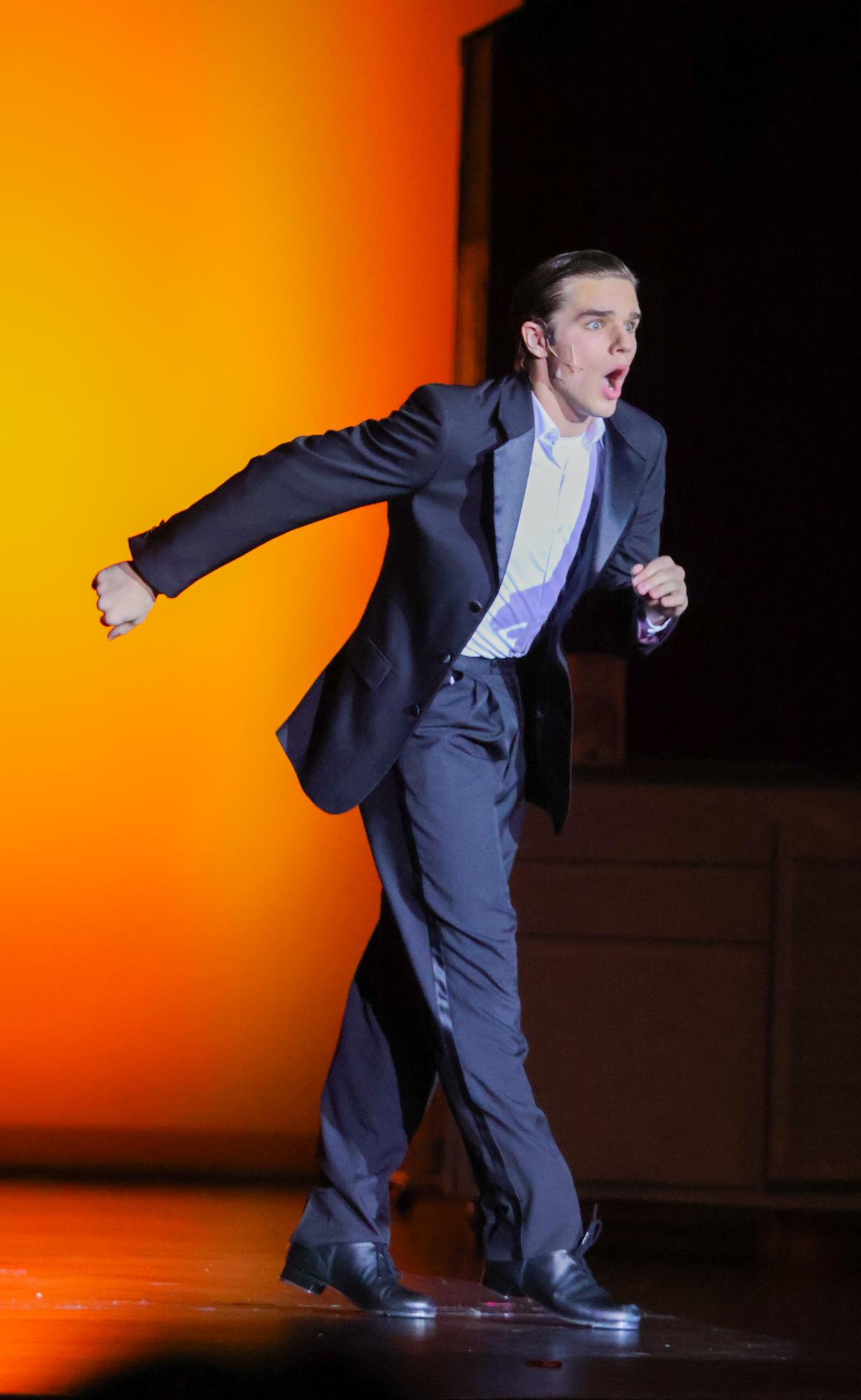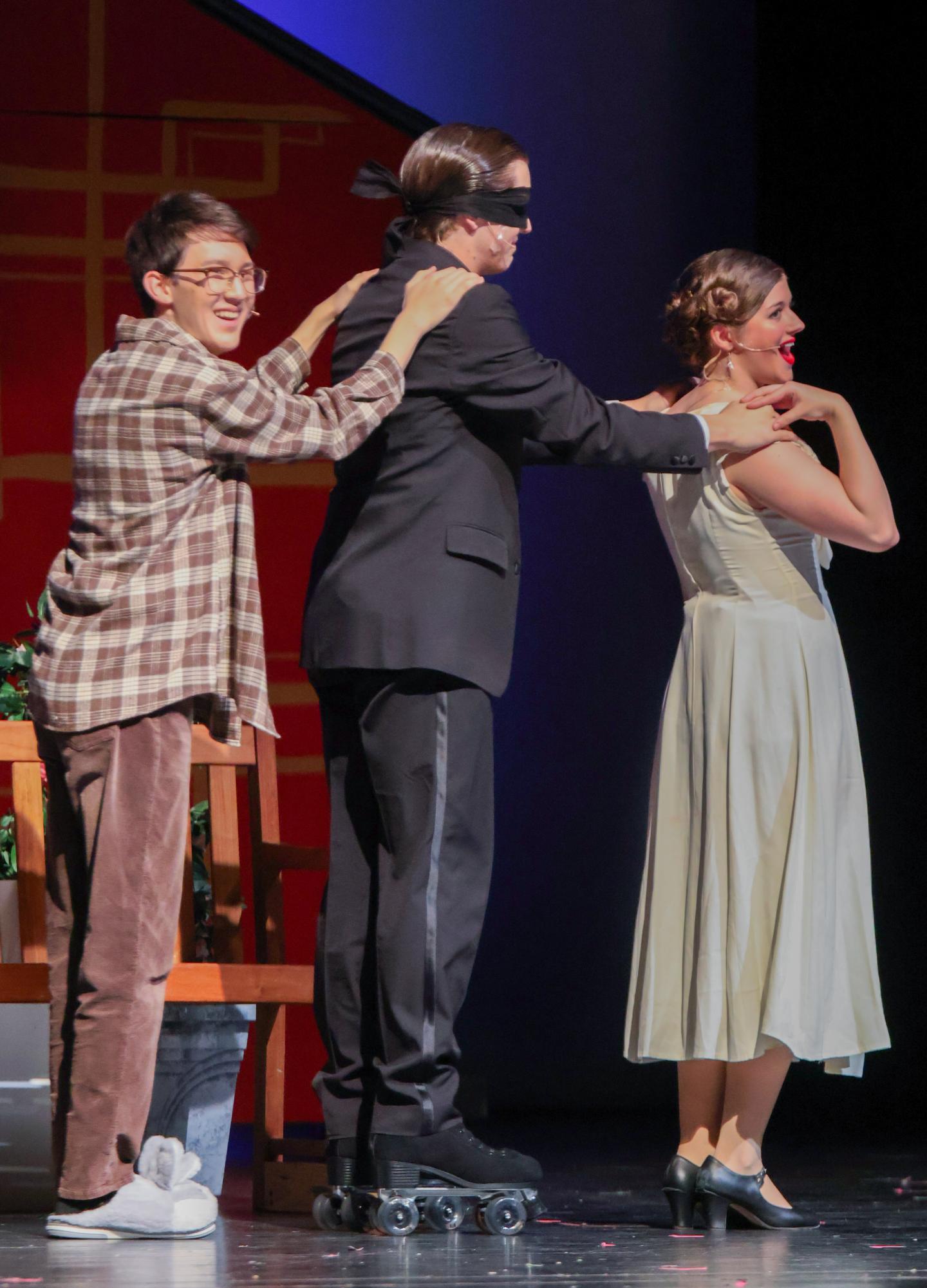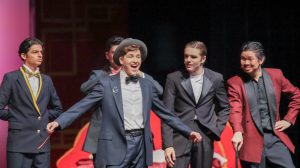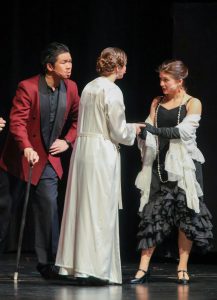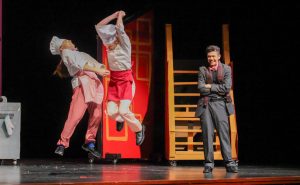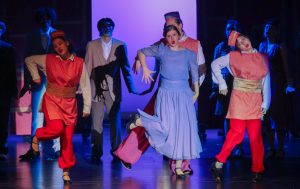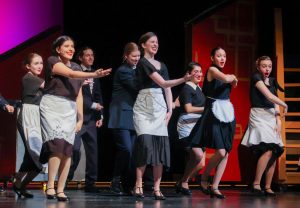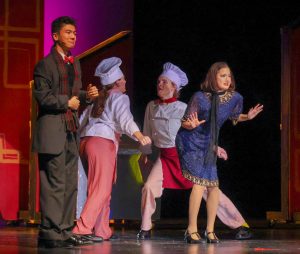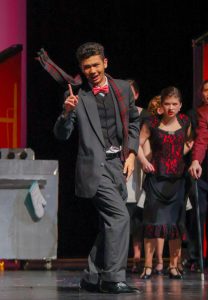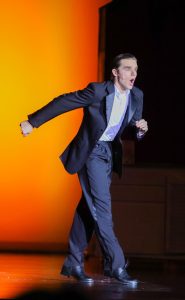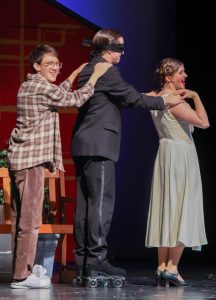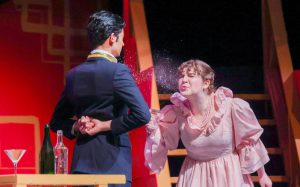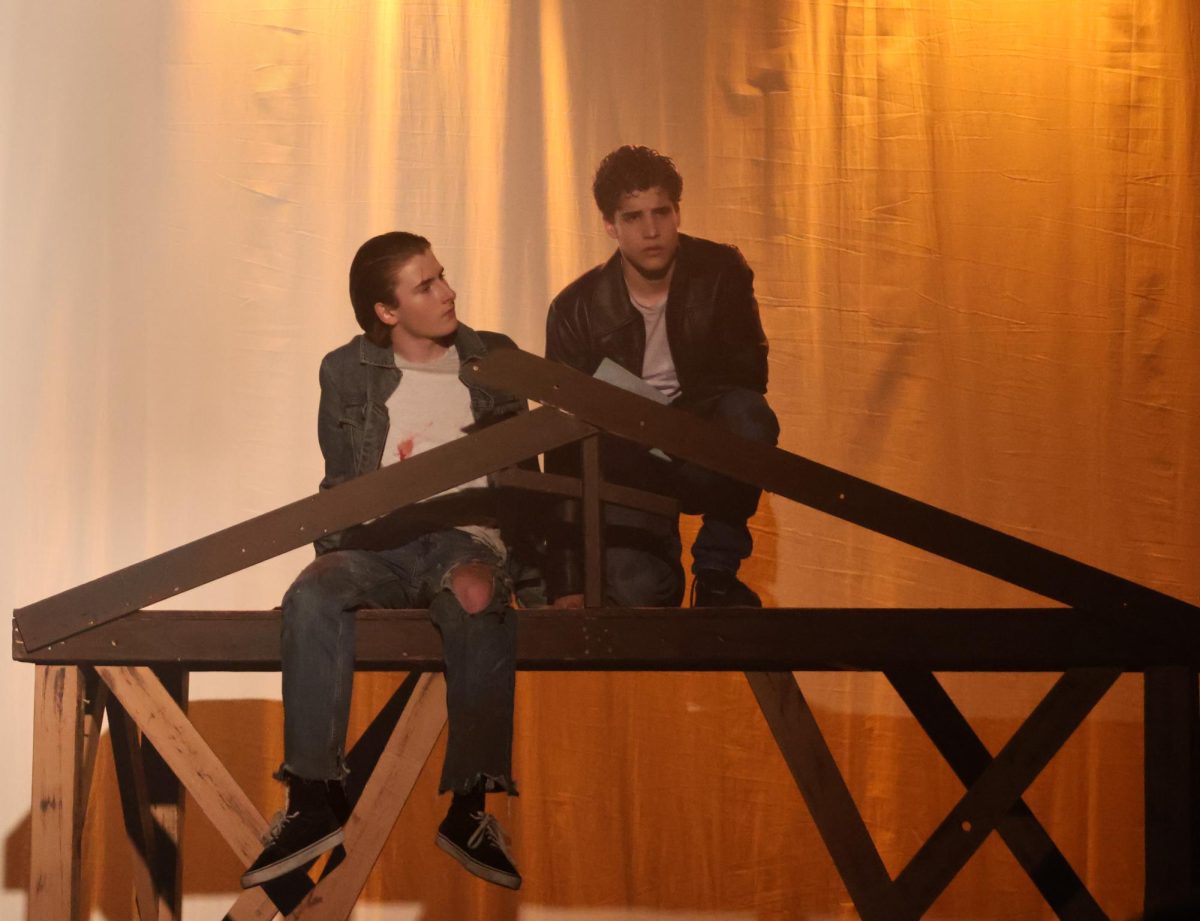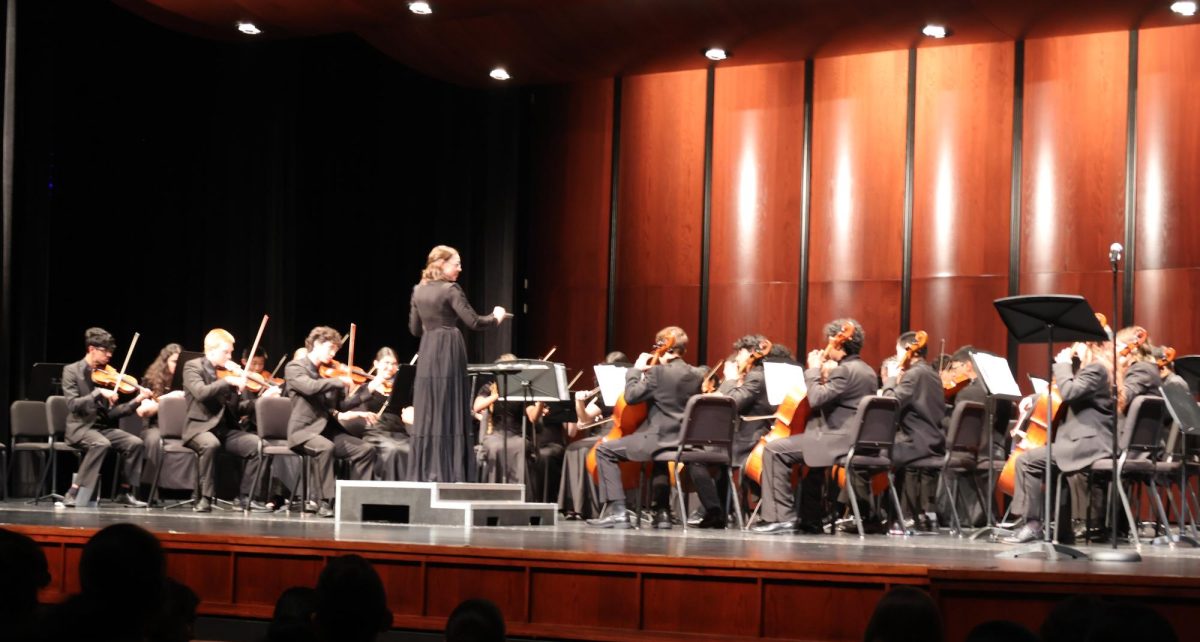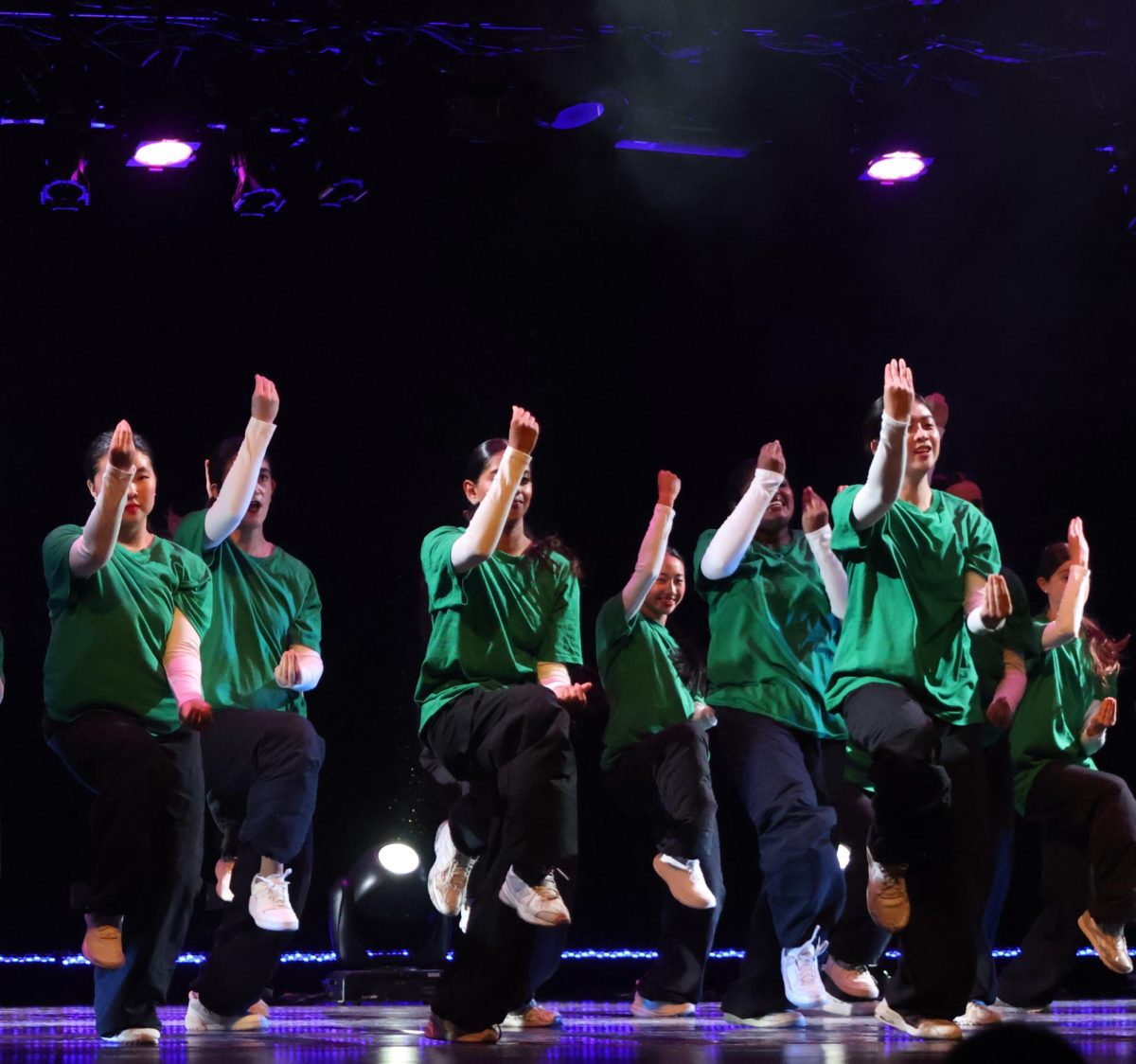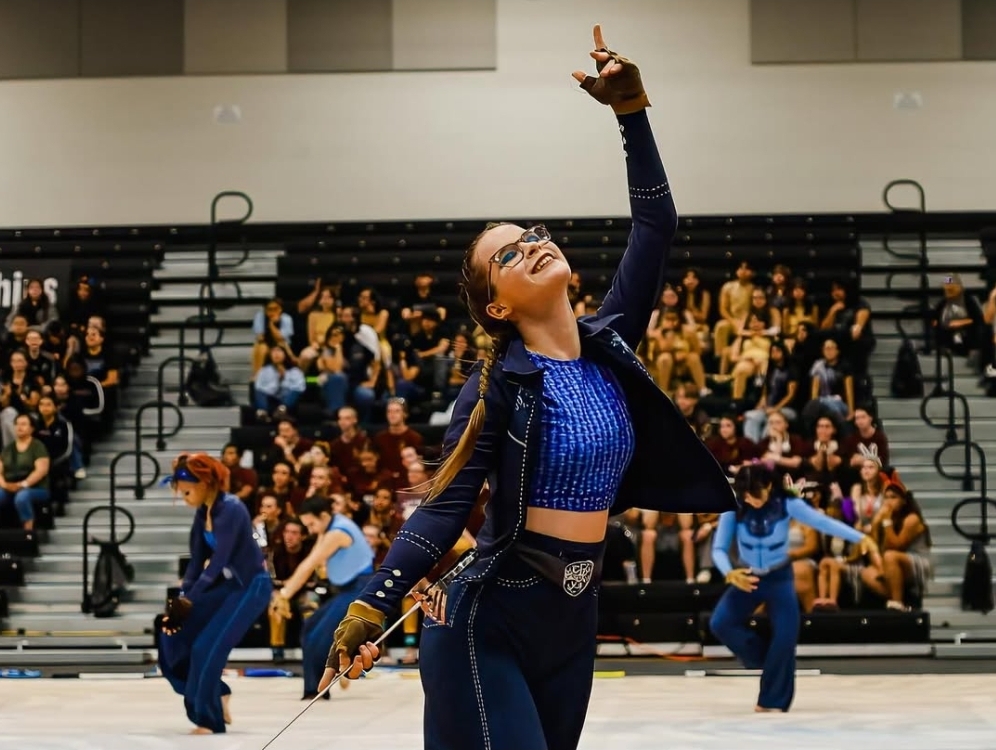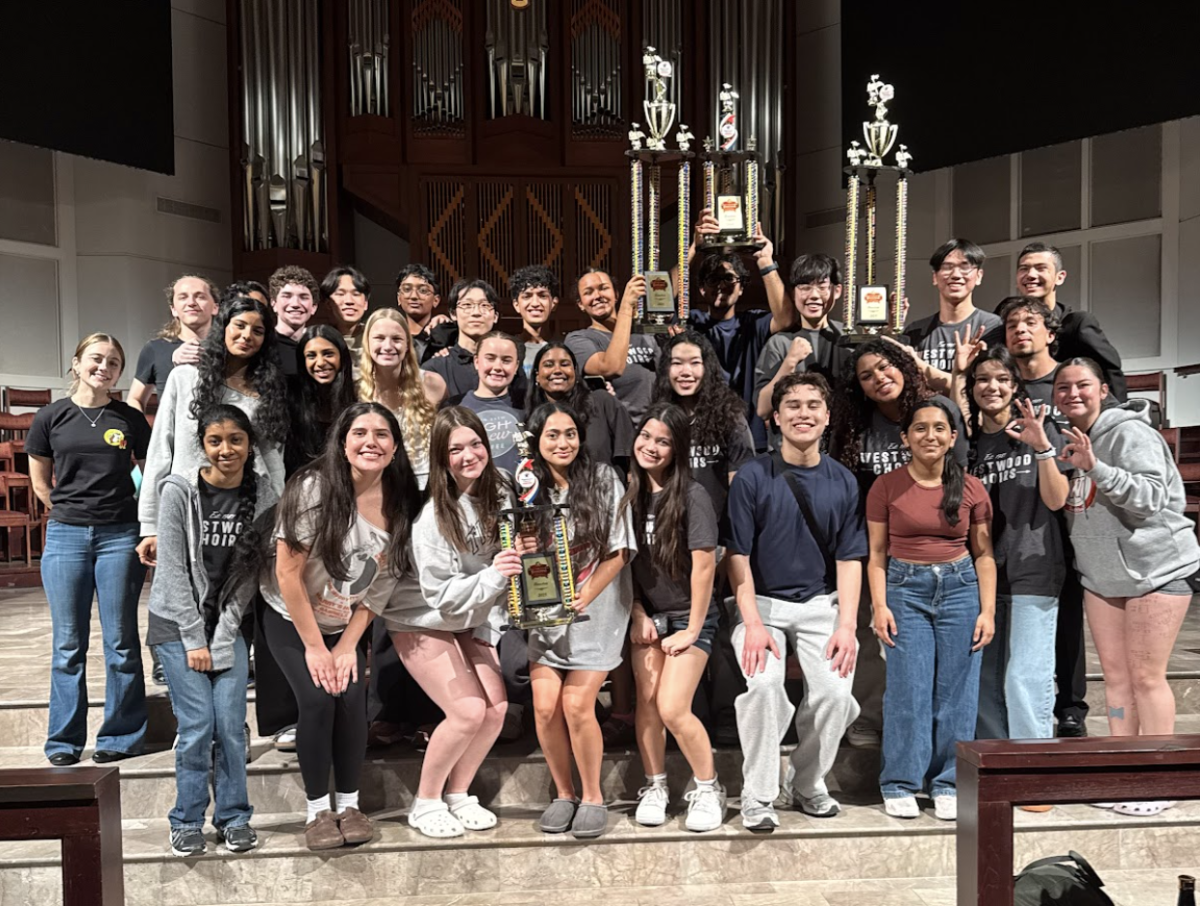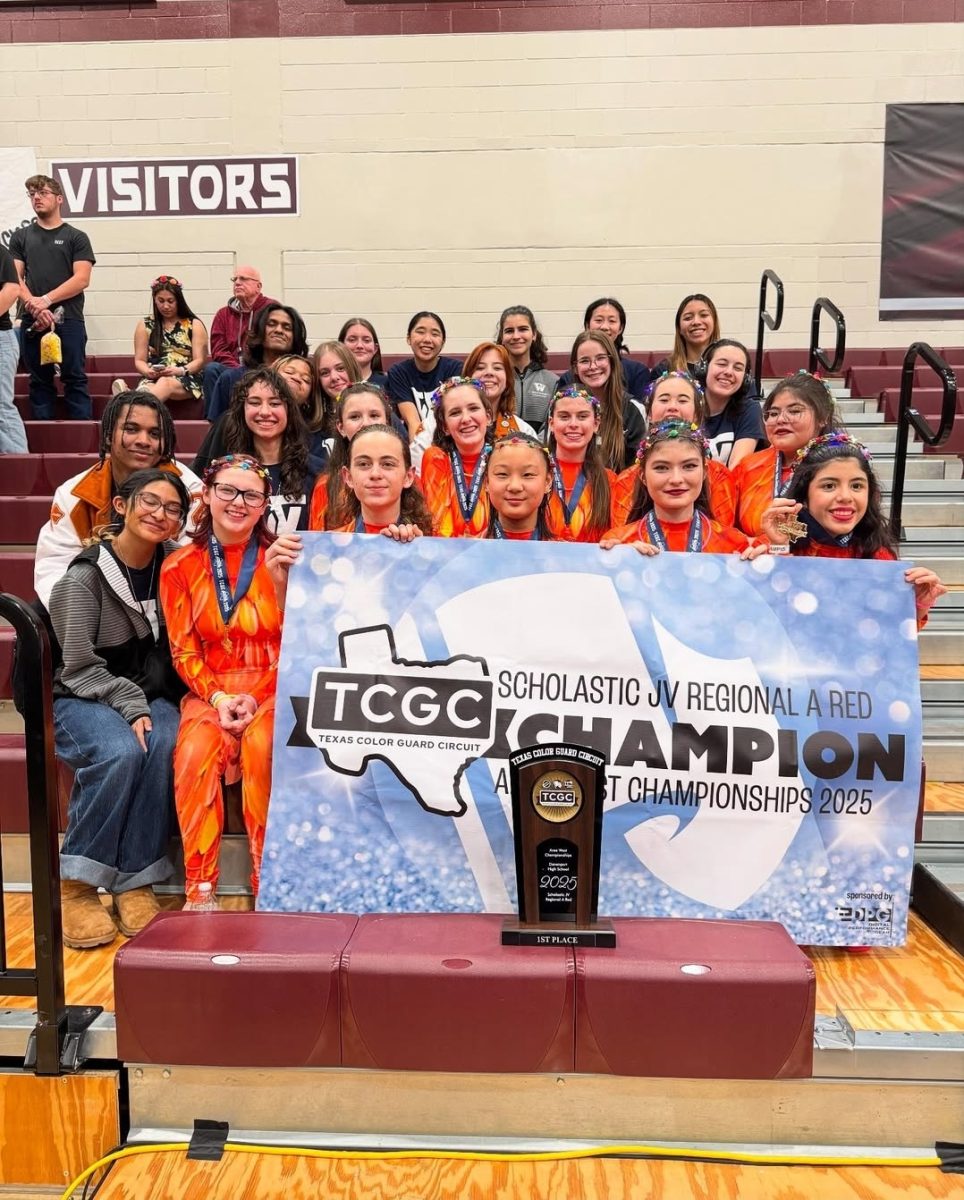With flashy red and gold decor and a big, brassy, musical underscore, Westwood Musical Theatre brought months of effort to the Raymond E. Hartfield PAC stage, performing the musical comedy The Drowsy Chaperone from Jan. 30 to Feb. 1. With almost fifty actors and over two dozen technicians, the two-hour comedy was a mammoth achievement, garnering almost a thousand audience members from Westwood and beyond.
From the earliest days of the process in September, the approach was different from musicals in years past. Unlike The Spongebob Musical of 2023 or Mean Girls: The Musical from 2024, The Drowsy Chaperone was not rooted in easily recognizable intellectual property, and came attached with no preconceived notions for the actors or crew members.
“Going into the show, a lot of us had no idea what was going on,” actor Connor Wormington ‘25 said. “Most of us had never heard of the musical before, [so] that was a really special thing, to be able to take that material and transform it into something.”
This also proved to be an asset to the performers, as it allowed them to take up the mantle of creating these characters in a largely independent way. For Annie Curtis ‘26, who played the genteel – if airheaded – hotel owner Mrs. Tottendale, that process began early on and remained thoroughly rooted in the context of the show.
“We go through a long process to develop our characters,” Curtis said. “I started with [watching] the show, I read all of her lines, I did a spacewalk to try to understand how an old woman would carry herself. I focused a lot on her relationships as well, with her staff and the characters around her.”
After the process of characterization had been kickstarted, the focus shifted to choreographing and polishing the musical numbers. This undertaking, led by student choreographer Elliott Richards ‘26 and alumni choreographer Kyra Jackson ‘24, comprised the bulk of the work in rehearsals for the musical, and spanned over three months.
“It was really a lot, having to work around being a principal [role] and also choreographing, but being able to do it with one of my best friends definitely made it a lot easier,” Richards said. “I really wanted to make [the performers] feel like they had a part in it, making it fun for them instead of just making them do some choreography that I came up with and that they didn’t like.”
The production team – consisting of student directors, stage managers, and designers – also began their work early on in the year. The team assisted director George Franco from August through May, in a variety of capacities.
“The process was pretty much just to [be] a part of the team,” Gerald Helcel ‘26, a member of the production team and later the stage left deck captain, said. “It involved helping [Mr. Franco] when he needed help, being at rehearsals, doing sound, taking notes, and then slowly planning out what Drowsy would be.”
As the show itself is a high-energy, Vaudevillian comedy, the scenes required tight, rapid-fire pacing and well-rehearsed timing. For actors like Curtis, achieving that boiled down to repetition and chemistry between scene partners.
“The more that we rehearsed and rehearsed and rehearsed, we just found a chemistry,” Curtis said, “Which was really cool because it felt like we didn’t necessarily have to work on it, or say everything. It just built up over time.”
For some performers, the process of forming those connections had an extra connotation. Since the class itself has the simple prerequisite of having taken just one theater class, actors like Leo Blomgren ‘25 entered into a new environment.
“It was very unique because it felt like a completely different environment than [straight plays],” Blomgren said. “There [were] all these people from musical theater that are very well-renowned that I don’t know. The most challenging aspect was trying to prove myself, prove the fact that I can do singing and dancing too.”
Another element to the performance was the frame story conceit, in which the piece itself concerns a man retelling and describing an in-world musical known as The Drowsy Chaperone. For the actors, this meant that each performer was not simply playing a character; they were playing actors playing characters.
“I’m basically playing two different characters,” Richards said. “I wanted to create the actor, and then on top of that work towards building the extra layer of the actual character.”
Unlike the fall show or the UIL one-act play, the annual musical performs at McNeil’s PAC, which presents another step along the rehearsal process. Starting a little over a week before opening night, technicians began moving set pieces into the space and creating sound, lighting, and prop cues for the entire musical.
“The most challenging part was getting [run crew] to listen and follow through,” Helcel said. “My leadership has developed significantly from this, along with my ability to work in the [tech] shop.”
For the actors, the PAC move-in process transforms the show from a series of disconnected scenes to a real show with tracks.
“Balancing ensemble track with a principal role was definitely a stressful but really rewarding experience,” Curtis said. “I had to put in the effort on my own time to learn both. But in the end, it was really rewarding to feel like I overcame something. And even when it gets stressful, at the end of the day, it’s really just for fun.”
The process of getting the show on its feet proved difficult even for actors with single tracks. Wormington played Man in Chair, the show’s narrator and one of the few characters who exist outside of the internal musical The Drowsy Chaperone. As a part of his job as the audience’s companion, Wormington remained onstage in-character from when house opened, through intermission to the end of the show.
“The most challenging aspect was how keyed in I had to be the entire time,” Wormington said. “It was a lot of mental [work] to stay in the moment. No matter what scene, [you have to] make sure the audience still knows that you are having opinions on whatever’s happening, even if you’re not. And always be ready to jump right into your next line.”
But despite the work of the extensive process, inevitable late nights, and almost 100-student team, actors and technicians alike reap the rewards of impacting audience members and forming genuine connections through art.
“I think for me, what was special is I could really bounce off the audience because I could look them in the eyes,” Wormington said. “It was a really good experience, especially when an audience member came up and they said, ‘I’d never seen this show before, but this is my favorite show I’ve seen in years.’ We set the bar ourselves, and I think that being able to set the bar so high was something so unique and so unheard of.”
Westwood Theatre takes the stage next for performances of the annual one-act play, Frankenstein’s Mary Shelley, on March 14.

